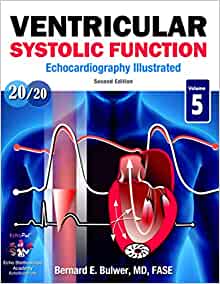-20%
Understanding the Significance of Ventricular Systolic Function Measurements
Key Considerations for Ventricular Evaluation
The assessment of ventricular systolic function holds paramount importance in comprehending the overall health and functionality of the heart. Various methodologies have been devised to precisely quantify this crucial aspect of cardiac performance. Each measure offers distinct insights into the interplay between ventricular structure, blood flow dynamics, and myocardial mechanics.
Exploring Ventricular Systolic Function Metrics
-
Cardiac Cycle and Ventricular Systolic Function: This assessment delves into the intricate timing and components of the cardiac cycle, including the duration and efficiency of ventricular systole (contraction).
-
Ventricular Structure and Systolic Function: An exploration of the relationship between ventricular morphology, dimensions, and systolic performance, highlighting the impact of structural abnormalities on contractile capacity.
-
Blood Flow Hemodynamics and Ventricular Systolic Function: This measurement investigates the interplay between ventricular pumping action, blood flow patterns, and pressure gradients within the heart and its associated vessels.
-
Cardiac Mechanics and Ventricular Function: A comprehensive analysis of the mechanical forces generated by the heart muscle, including myocardial stiffness, compliance, and the influence of these parameters on ventricular function.
-
Global and Regional Measures of RV and LV Systolic Function: This assessment encompasses global indices of ventricular performance alongside regional measures that provide insights into the heterogeneity of contractile function across different myocardial segments.
-
Linear and Volumetric Measures of Global LV Systolic Function: This approach utilizes measurements of left ventricular ejection fraction and volume, offering a standardized method to assess overall systolic function.
-
Doppler Hemodynamic Measures of Global LV Systolic Function: Doppler echocardiography enables non-invasive estimation of cardiac output and stroke volume, providing valuable hemodynamic information about ventricular performance.
-
Global Myocardial Velocity and Deformation Measures of Global LV Systolic Function: By tracking the movement of myocardial tissue, this technique offers insights into global ventricular deformation, including strain and strain rate, revealing subtle changes in myocardial mechanics.
-
Tissue Doppler Imaging and Speckle Tracking Echocardiography: These advanced echocardiographic modalities provide high-resolution imaging of myocardial motion, allowing for detailed assessment of regional and global contractile function.
-
Regional Measures of LV Systolic Function and Ventricular Wall Mechanics: This approach examines the regional variations in myocardial deformation and mechanics across the different segments of the left ventricle, identifying areas of impaired or preserved contractility.
-
Tissue Doppler Imaging: Myocardial Velocity and Deformation – Strain and Strain Rate Imaging: Tissue Doppler imaging provides quantitative measures of myocardial velocity and deformation, offering insights into the dynamics of contraction and relaxation in different myocardial regions.
-
Speckle Tracking Echocardiography: Myocardial Velocity and Deformation – Strain and Strain Rate Imaging: This technique utilizes sophisticated algorithms to track the movement of myocardial speckles, generating detailed strain and strain rate maps that reveal subtle abnormalities in regional myocardial function.










Reviews
Clear filtersThere are no reviews yet.